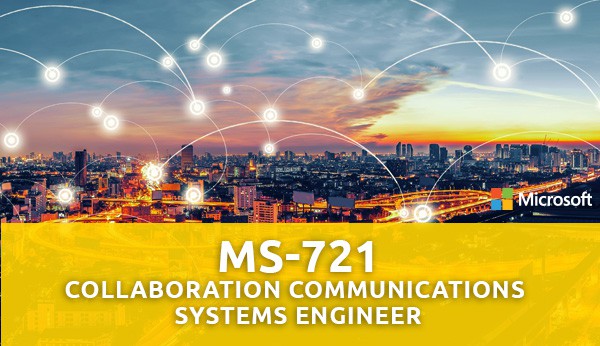
Learning Path 1: Plan and design Teams collaboration communications System
You'll learn how to plan, design, and deploy Microsoft Teams collaboration communications systems with Microsoft Teams meetings, Teams Phone, and personal and shared space devices, including Microsoft Teams Rooms and Surface Hub.
Modules:
- Introduction to Teams meetings and calling
- Plan for Teams Phone
- Plan for Microsoft Teams Rooms and Surface Hub
- Plan and optimize network performance for Teams media
- Configure and deploy Teams Phone
- Configure and deploy Teams Phone with Direct Routing
- Extend Teams Phone with additional services
Labs
- Assign permissions and licenses
- Setup PowerShell for Microsoft Teams administrator
- Evaluate your network with the Network Planner
- Use the Teams Network Assessment Tool
- Configure a basic network topology for dynamic emergency calling
- Configure voice policies
- Prepare users for calling
- Configure audio conferencing setting
- Exercise 1: Configure lab for Direct Routing
- Exercise 2: Deploy the session border controller
Learning Path 2: Manage Teams collaboration communications systems
Discover how to manage Teams collaboration communications systems, including Microsoft Teams meetings, Teams Phone, Microsoft Teams Rooms, and other devices after implementation. You'll learn how to manage Teams users, Teams devices, and perform common troubleshooting tasks.
Modules:
- Manage meetings and events experiences
- Guided project –Create and assign Teams policies
- Configure and manage voice users
- Configure auto attendants and call queues
- Configure, deploy, and manage Teams devices
- Guided project -Prepare meeting room experiences
- Monitor and troubleshoot Teams collaboration communications systems
Labs:
- Manage voice users
- Configure call queues and auto attendants
- Manage Teams devices
- Monitor and troubleshoot Teams Phone
Collaboration Communications Systems Engineers are responsible for planning, deploying, configuring, maintaining, and troubleshooting Microsoft Teams Phone, meetings, and personal and shared space devices, including Microsoft Teams Rooms and Surface Hub.
Collaboration Communications Systems Engineers have a fundamental understanding of networking, telecommunications, audio/visual and meeting room technologies, identity and access management.
They are proficient in managing and monitoring Teams Phone, meetings, and certified devices using the Microsoft Teams admin center, PowerShell, the Microsoft Teams Rooms Pro Portal, and the Call Quality Dashboard. They deploy and configure Microsoft Teams Phone with PSTN connectivity through Microsoft Calling Plans, Operator Connect, Teams Phone Mobile, and Direct Routing.
Collaboration Communications Systems Engineers work with Teams Administrators, Microsoft Identity and Access Administrators, and Microsoft 365 Administrators. In addition, they may work with owners of other workloads, including facilities managers, network engineers, security engineers, device manufacturers, telephony providers, and Microsoft Certified solutions providers.
Before attending this course, students should have intermediate knowledge of the following topics:
- Plan and configure a Microsoft Teams environment
- Manage chat, teams, channels, and apps
- Monitor and troubleshoot a Microsoft Teams environment
- Microsoft 365
 Print Page
Print Page
